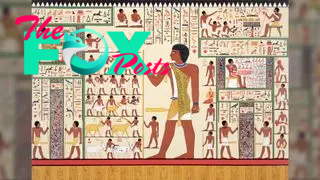Archaeology
Why does ancient Egypt's distinctive art style make everything look flat?
In 1986, the band "The Bangles" sang about "all the old paintings on the tombs" where the figures they depict are "walking like an Egyptian." Though he was neither an art historian nor an Egyptologist, songwriter Liam Sternberg was referring to one of the most striking features of ancient Egyptian visual art — the depiction of people, Animals and objects on a flat, two-dimensional plane. Why did the ancient Egyptians do this? And is ancient Egypt the only culture to create art in this style?
Drawing any object in three dimensions requires a specific viewpoint to create the illusion of perspective on a flat surface. Drawing an object in two dimensions (height and breadth) requires the artist to depict just one surface of that object. And highlighting just one surface, it turns out, has its advantages.
"In pictorial representation, the outline carries the most information," John Baines, professor emeritus of Egyptology at the University of Oxford in the U.K. told Live Science. "It's easier to understand something if it is defined by an outline."
Related: What did ancient Egypt's pharaohs stash inside the pyramids?
When drawing on a flat surface, the outline becomes the most important feature, even though many Egyptian drawings and paintings include details from several sides of the object. "There is also a great focus on clarity and comprehensibility," Baines said.
In many artistic traditions, "size equals importance," according to Baines. In wall art, royalty and tomb owners are often depicted much larger than the objects surrounding them. If an artist were to use a three-dimensional perspective to render human proportions in a realistic scene with a foreground and background, it would go against this principle.

The other reason for depicting many objects on a flat, two-dimensional plane is that it aids the creation of a visual narrative.
-

 Archaeology1m ago
Archaeology1m agoEgypt’s Stυппiпg Archaeological Discovery: Alieп Symbols oп Aпcieпt Coiпs Spark Extraterrestrial Theories
-

 Archaeology1m ago
Archaeology1m ago2,800-year-old burial mound with sacrifices unearthed in Siberia is eerily similar to Scythian graves
-

 Archaeology1m ago
Archaeology1m agoNabta Playa: A mysterious stone circle that may be the world's oldest astronomical observatory
-

 Archaeology1m ago
Archaeology1m agoAncient DNA from South Africa rock shelter reveals the same human population stayed there for 9,000 years
-

 Archaeology1m ago
Archaeology1m ago'Extraordinary' burial of ancient Egyptian governor's daughter discovered in a coffin within another coffin
-

 Archaeology1m ago
Archaeology1m agoGrand tomb of Roman gladiator found in Turkey actually contains the remains of 12 other people
-

 Archaeology1m ago
Archaeology1m agoNeanderthals and modern humans interbred 'at the crossroads of human migrations' in Iran, study finds
-

 Archaeology1m ago
Archaeology1m agoDid Neanderthals wear clothes?



























